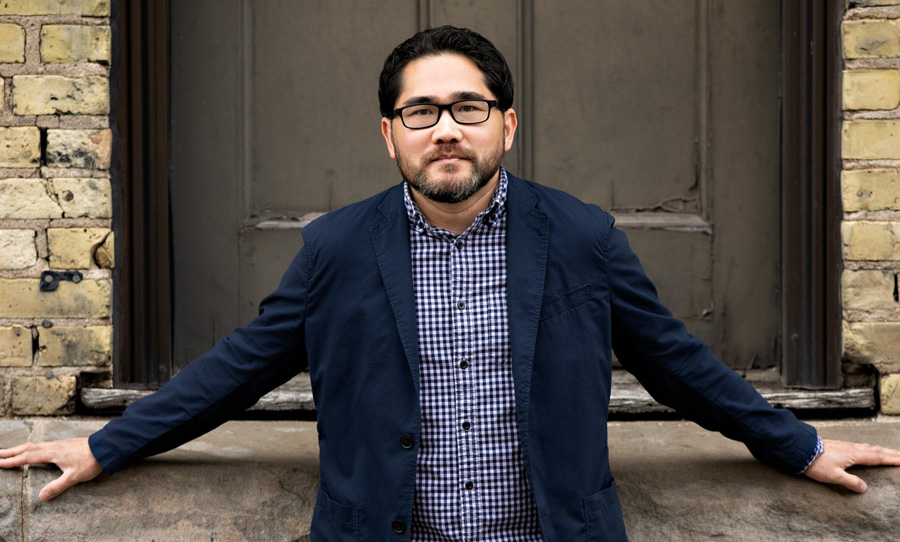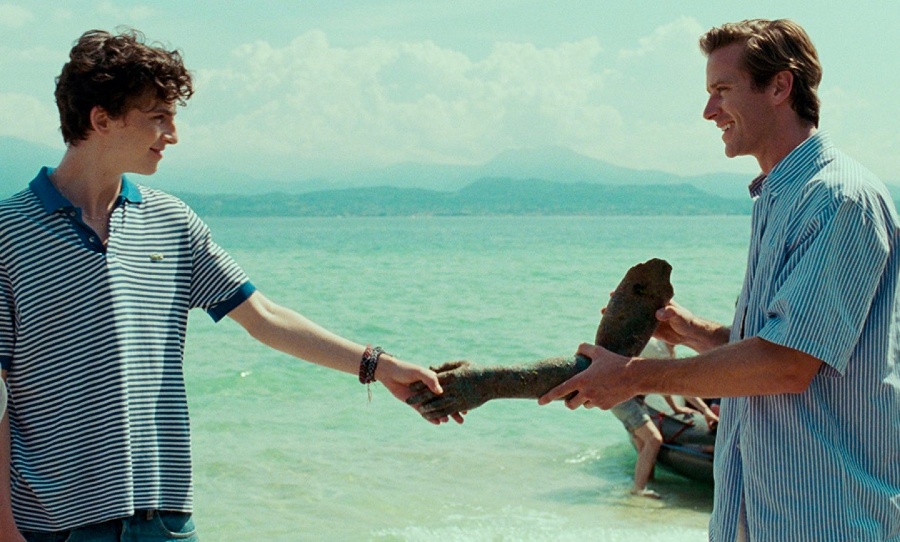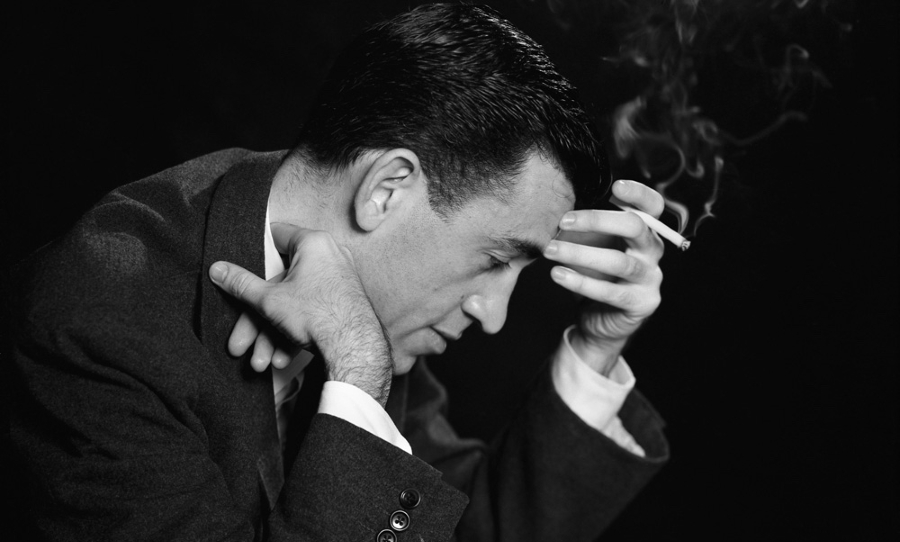In How High We Go in the Dark, Sequoia Nagamatsu shows how relationships can hold fast and continue to evolve in the face of death and even intergalactic travel.
When Sequoia Nagamatsu tentatively laid the first foundations for what would become How High We Go in the Dark (Bloomsbury), he was still deciding whether or not he should pursue writing as a career. The idea that the planet would be shaken to the core by a mysterious virus was fanciful, to say the least.
During the book’s long period of development, so much changed in the world. Yet, such is Nagamatsu’s powers of imagination — not to mention his capacity to depict the intimacy of human interactions and innermost thoughts of individuals with pinpoint precision — that his debut novel reads as an incredibly prescient commentary on our current state of affairs, as well as an invitation to reflect on how we honour our relationships with those around us, and those who we have lost.
We spoke to Sequoia Nagamatsu on the eve of the launch of How High We Go in the Dark about the threads that connect the chapters and characters together, his writing process, and his abiding love for the speculative wonders of Star Trek.

HAPPY: In City of Laughter, early on in the book, in an interaction between Dorrie and Skip, there’s an epiphany that sums up the mood of our era. Quote:
“—never acknowledging the future, desperately wanting to forget the past—taking small comfort in the equilibrium that we both knew couldn’t last forever.”
And then I discovered that you actually wrote the book before the real-life pandemic took hold of the world. Are you surprised that you were able to predict the emotional resonance of the time so accurately?
SEQUOIA: With lines like that and thinking about how we’re living our everyday life, it is a little spooky (laughs). I don’t think that anybody could have predicted a lot of things about Covid. Obviously, the plague in my novel is very different: it’s other-worldly in nature, it’s way worse in a lot of ways. And I don’t think that anyone could have predicted our societal reaction to a tragedy like this: in good ways and bad ways, in terms of human behaviour and the way that communities have behaved. Honestly, if I’d brought a book about a Covid-like pandemic to editors a few years ago and outlined everything that we’ve gone through, they would probably say that it’s not believable.
HAPPY: That ability to tap into the emotional tenor of the pandemic era happens time and time throughout the book. There’s this huge headline event of the virus, yet you focus on capturing those intimate moments of reflection, often internally. Was that just a natural manifestation of the characters and the situations that you created for them?
SEQUOIA: Yeah, I think so. My first book, a short story collection, dealt with grief, catharsis, and moving on. One day I’ll write a happy book (laughs). These themes are preoccupations of mine. I’ve had a fair amount of tragedy in my life — close friends have died, several family members have died recently. I’m always interested in exploring the questions of: How does one move on? How do you honour your loved ones, even if the relationship wasn’t perfect? Or when the space to ideally honour a loved one, or say goodbye to them, simply doesn’t exist. That’s certainly true now — people can’t go into hospitals and be with people that they care about.
A lot of these explorations started over ten years ago when I was living in Japan. It was on the heels of my grandfather’s death. And in a country like Japan, there are a lot of obstacles and dilemma’s that the Japanese government have to deal with because of the large elderly population. So there are a lot of innovations happening there that I found very fascinating. Japan has this very interesting juxtaposition of the traditional — the world of temples and Zen gardens — against futuristic skyscrapers.
In a lot of ways, that’s the Japanese identity: looking toward the future and embracing technology, but at the same time, knowing there’s a past that can’t be fully reclaimed. There’s a grappling with the question of “who am I supposed to be?” and its intersection with technology. A lot of those primary threads of funerary explorations and grief started with research when I was living in Japan and teaching English.
In the West, we’re often not allowed to grieve. Pandemic aside, the first thing that we’re often saddled with — after we cry — is a financial obligation and becoming event planners for a funeral. So I think the modern manifestation of death is very commercial and materialistic.
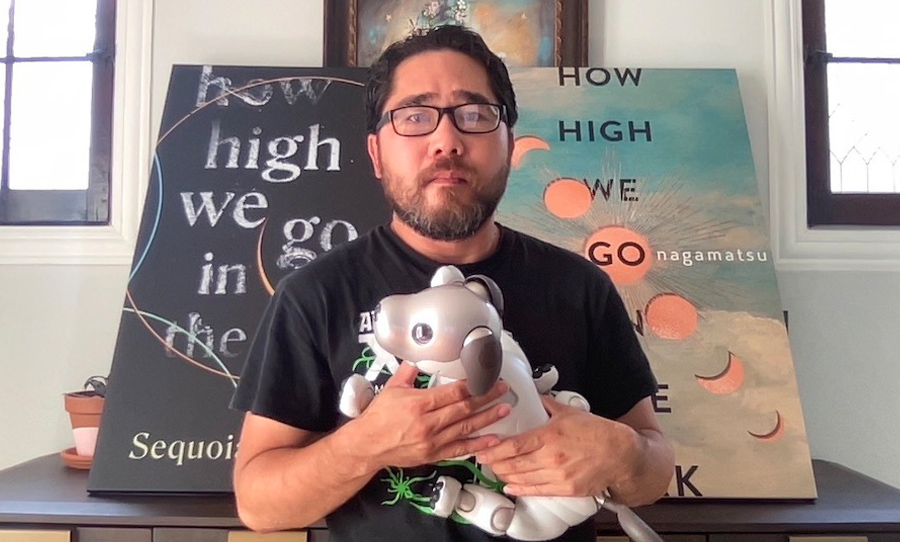
HAPPY: The book is made up of shorter stories, each with its own structure, yet there is character development that connects them as well — they often reappear by surprise in different stories. What motivated you to go with this form?
SEQUOIA: The oldest part of the book, in its raw form, started in 2008 — that was the Melancholy Nights in Tokyo Virtual Cafe chapter. I actually wrote it in an internet cafe — at least part of it — because I was very fascinated with the manifestation of homelessness in Tokyo. At that time, I was still deciding whether or not I wanted to be a writer. I was still pretty green back then. That story in its first form was published in an anthology called One World. It was a happy accident that a journalist saw this tiny short story that I had written in an online magazine that was actually about the extinction of a language in Tasmania. Then a group of writers helped me craft that story and gave me the confidence to continue on with writing.
I didn’t really realise that this would be more than a collection until around halfway through the process. I’d written about seven or eight stories by then. At that point, the funerary and grief threads were becoming apparent. Some characters were starting to reappear a little bit. The plague thread didn’t occur until around 2014, when I read an article in The Atlantic about scientists prodding the permafrost.
But even then, I wasn’t interested in writing a story where the virus was privileged. The ice was melting, these things were emerging from the ice, this could be a vehicle to explore alternative funerary practices and why they became necessary. It wasn’t until I started working with my agent that we started to use the word “novel”. She said that there was something not quite right about calling it a collection because, at this point in time, I started experimenting with speculative aspects that were exploding the book into bigger territory.
For me, it was inevitable to include that kind of speculative storytelling. I’m a big Star Trek nerd, so if I’m going to write something, I’m probably going to include a spaceship and some nods to science fiction. In particular, I’m thinking of this episode of Star Trek: The Inner Light where Picard lives an entire lifetime on this extinct planet. It’s such a beautiful piece of television and I wanted the book to approach that kind of science fiction, where it’s about community, humanity, and the ties that bring us together, in good moments and horrible moments as well.
The last chapter [The Scope of Possibility] really brings it all together. It was something I worked on in grad school and almost something that could’ve been its own novel. But as I was struggling to think of bringing a sense of universality to the book, I decided that it needed to be the final piece. It gave me a lot of work because then I had to go back and put all these Easter eggs throughout the book.
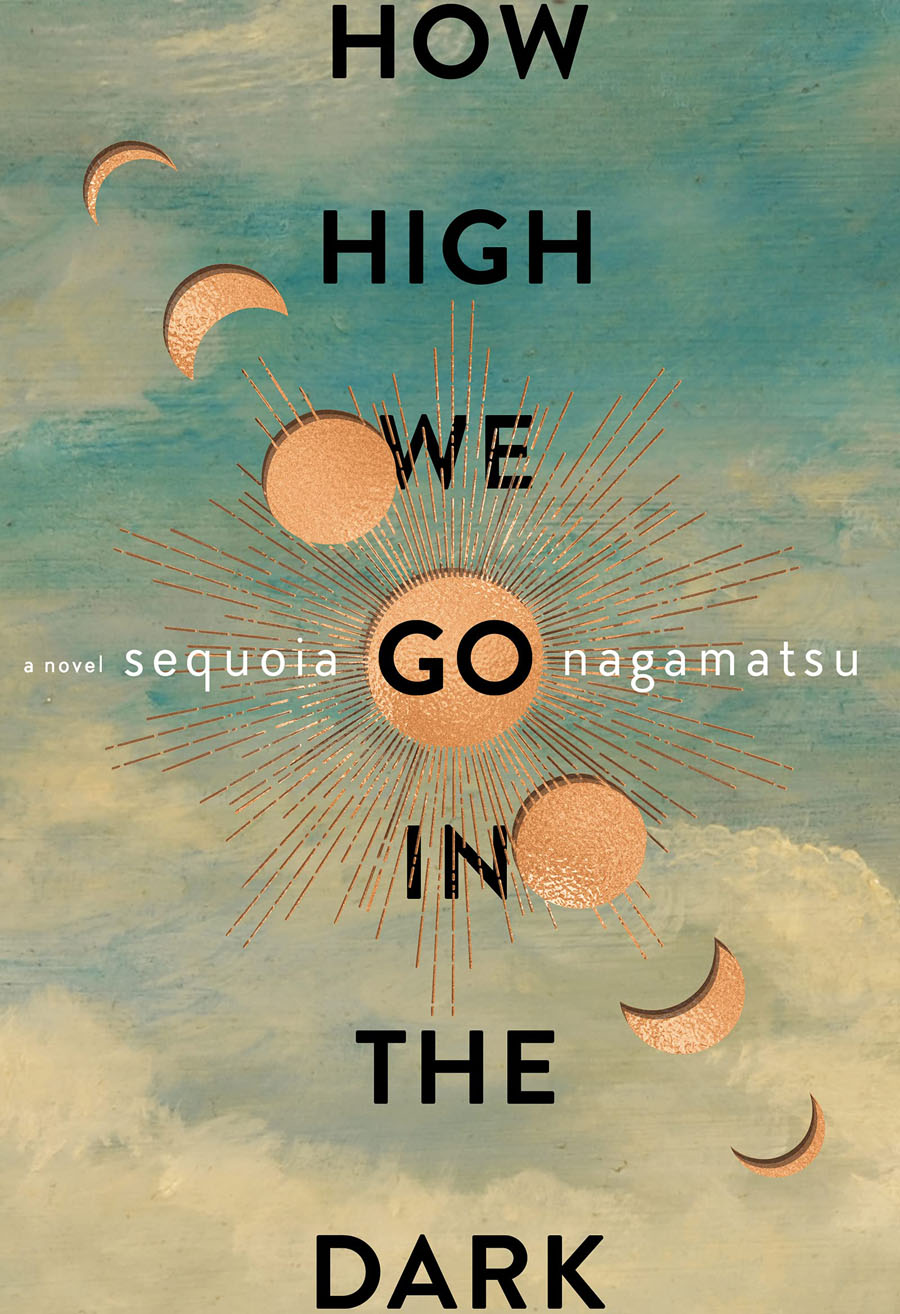
HAPPY: Another interesting theme is the notion that technology can facilitate human relationships. I’m thinking of Speak, Fetch, Say I Love You and Hollywood the robot dog, and Akira’s virtual reality cafe later on in the book. Some people may think of this as dystopic, but I also read it as quite a positive thing as well. What’s your view on that?
SEQUOIA: I think it’s a fine line. In the case of Akira, he’s inhabiting this virtual realm and he finds a connection there, a very important one. Ultimately though, he decides to switch off and join the world. Social media, for example, is a hell of a thing. It’s at the heart of social movements. It allows us to keep in touch with friends that we normally wouldn’t keep in touch with in a relatively low-impact way. But it’s also a way for you to have an illusion of connectedness. So I think there’s a fine line between how social media and technology brings us together, but also drives a wedge between genuine, real-world relationships.
HAPPY: On the topic of relationships, albeit unusual ones, I found Songs of Your Decay especially moving. It’s quite a unique love story, considering it’s a romance that transcends death and makes it beautiful in a way. Was that your intention? To highlight the possibilities of connection between the living and dead?
SEQUOIA: A few of the chapters point toward how we can reimagine the connections that we have in life. Before You Melt Into the Sea does this as well. They address the question of whether or not something was real and the memory of somebody. How you honour that person. It can become a weird, cathartic comfort after somebody’s death.
HAPPY: And in Songs of Your Decay, it’s actually about turning away from a live person and preferring to foster that connection with a dead person through music and letters.
SEQUOIA: Aubrey, the protagonist in that chapter also addresses the reality that if Laird lived, maybe the relationship would have developed, or maybe not. Because they were just beginning this friendship/quasi-romance, the possibilities were there. She’s choosing to reside with possibility and hope, versus any actualities that may have come to pass had Laird lived.
My novel launches tomorrow! I have been waiting so long for this moment and it is surreal to see this book being talked about so much + the support from the lit community that helped shape me. Shout out esp. to my agent @AnnieAHwang. Order today! https://t.co/G2i9otB3jB pic.twitter.com/Qpret74jKx
— Sequoia Nagamatsu (@SequoiaN) January 17, 2022
HAPPY: In A Gallery a Century, A Cry a Millennium it really pushes the bounds of speculative fiction into sci-fi with intergalactic travel. The book is so provocative in all kinds of ways and presents one of the book’s biggest juxtapositions: humans are on the precipice of a new age, yet we still have to deal with moody teenagers, resentful partners. Was it a conscious effort on your part for the characters to retain their petty human habits, even as they’re pushed to the brink and beyond?
SEQUOIA: I think this is something that always bothered me with Star Trek: you’d think “do they go to the bathroom?” (laughs). We never see that. So if I was going to have a spaceship in my story, I wanted to make sure that we weren’t focusing on the adventure. I wanted to visit those quieter moments. Somebody’s praying. They’re painting these murals. Even as they’re boarding the spaceship, Miki is letting her granddaughter text on her phone. It’s one of my favourite scenes. It’s such a small thing and such a normal teenage behaviour, but this is the last time that she’s ever going to be able to do this. She’s never going to see her friends again. She’s never going to see Earth again.
HAPPY: And you’re not overly delicate with emotional reactions throughout the book either. There are many times where characters reflect on the idea that “it should have been me who died.” There’s also resentment directed at the people who survived too. There’s guilt, hatred, and unpredictability of emotional response in the face of death.
SEQUOIA: I think that’s a healthy thing. It can be taboo to speak in plain terms. You can’t go to a funeral and say “yeah, it’s a tragedy, but this guy was kind of a jerk.” You’d get kicked out (laughs). Not everyone lives a saintly life and I think it’s healthy to acknowledge that at some point.
HAPPY: This book has opened up myriad possibilities for blending stories about human connection with speculative fiction. Are you eager to pursue this idea further, or are you keen to go in a different direction for your next work?
SEQUOIA: I’ll always enjoy merging genres to a degree. My next novel will probably have elements of the literary, domestic realism, and the speculative. That novel is at least tentatively titled Girl Zero. It focuses on a couple who lose their daughter and in that reality, mythical creatures have existed in the past. The father in the novel decides to search out one of these creatures — a kind of shapeshifter — in the wilds of Japan and decides to replace his daughter. It becomes a story of identity formation where this replacement daughter is being coached to be the daughter that they lost.
But at the same time, this replacement daughter knows the truth. She loves these people who have become her parents, but realises that she’s becoming another person that is not the girl that died. So the novel is a conversation between the selves of this little girl, but also about how the father acknowledges the truth of the situation and how the mother doesn’t acknowledge that her daughter died at all and has chosen to embrace the fantasy.
How High We Go in the Dark is out now via Bloomsbury.
